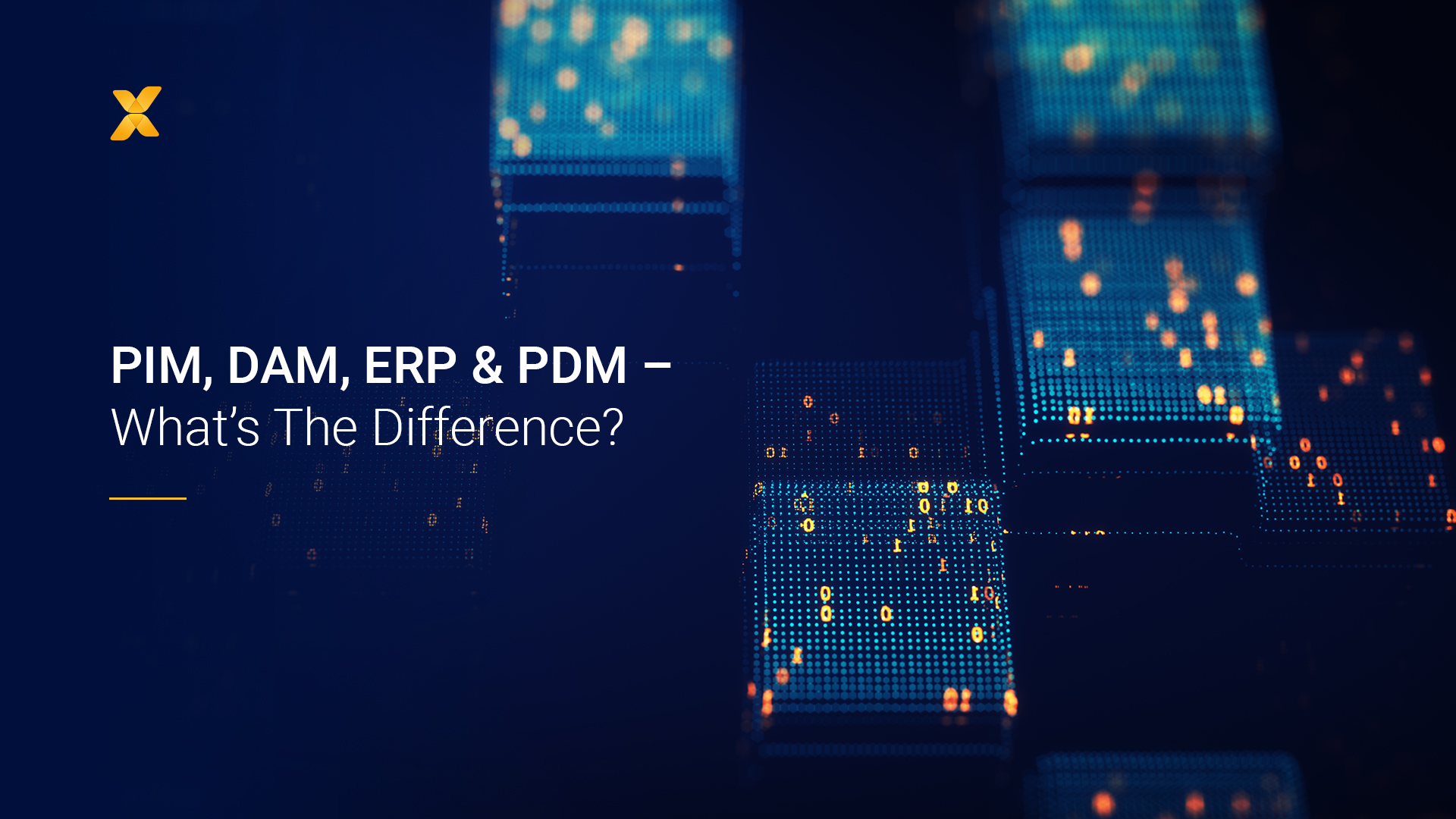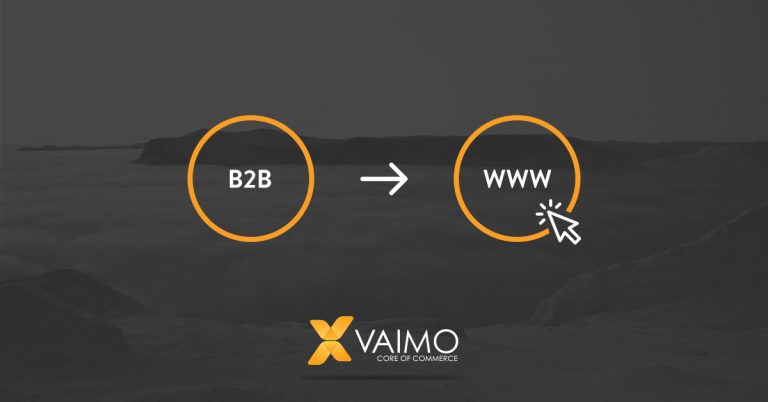What’s the key to digital success? Whether you run an established online store or just starting, you’ll find that managing the role of product information data is essential to growing your business.
With so many ecommerce systems at your disposal, it can be challenging for companies to know how different integrated systems fit into an overall strategy. In this article, we’ll cut through the abbreviations and acronyms and explore the differences between various tools and systems related to product information.
Here’s what we’ll be looking at:
PDM — Product Data Management
ERP — Enterprise Resource Planning
DAM — Digital Asset Management
PIM — Product Information Management
What is product data management (PDM)?
Product data management (PDM) describes the business system, a part of Product Lifecycle Management, that manages and publishes all product-related data and its associated processes.
Primarily used by engineers, PDM typically tracks data related to the technical specifications of a product—its manufacturing instructions, part numbers, computer-aided design (CAD) files, and production processes.
A PDM system stores and organizes this data so that relevant stakeholders, designers, engineers, and manufacturing teams can collaborate in real-time and without the risk of error.
What are the benefits of a PDM system?
PDM brings greater efficiency to your product development process by locating accurate data quickly, increasing productivity and decreasing cycle times, and improving operational resources.
Do I need a PDM system?
A PDM system is an excellent choice for any product development company, as it provides a single source of truth for all data related to the product. The ideal PDM system will be accessible by multiple teams and applications and support various business functions.
What is enterprise resource planning (ERP)?
Enterprise resource planning (ERP) is used to manage numerous vital areas of your business, such as order management, inventory, logistics, accounting, human resources (HR), and customer relationship management (CRM).
ERP software integrates essential business functions into one complete system, streamlining processes and information across your entire business. For example, an ERP means that your sales information can automatically flow into your financial systems without needing any manual (and error-prone) data re-entry.
What are the benefits of an ERP system?
An ERP system allows you to control and manage your product-related processes efficiently. It also empowers different teams and stakeholders to unite around the same information. As a result, an ERP system improves coherence between teams and increases team productivity.
Do I need an ERP system?
Organizations that work with a supply chain can use an ERP system to help monitor all the moving parts of manufacturing and distribution. An ERP system can also benefit companies in other industries, allowing them to track large amounts of data and manage various financial tasks.
What is digital asset management (DAM)?
At its core, a DAM system manages your product assets. These could be videos, documents, logos, presentations, images, audio, and meta-information related to your products.
What are the benefits of a DAM system?
A DAM system lets your employees and teams quickly access, retrieve, and use these digital files — eliminating wasted time and resources.
With a DAM system, you possess a centralized and secure location for digital content, which can be shared internally and externally. A DAM system ensures your digital files are up-to-date and consistent.
Do I need a DAM system?
Marketing departments will find a DAM system beneficial as it increases brand consistency, holds all digital assets in one central location, keeps them up-to-date, and streamlines collaboration and distribution.
What is product information management?
Product information management (PIM) is a central management hub to consolidate, manage and enhance your product information.
It does so by collecting technical and marketing data from all your sources, enriching it, and then automatically publishing it to your channels that need it the most—notably sales, marketing, and digital. In doing so, it provides your business with one single source of product information truth.
Related Reading: What is PIM?
What are the benefits of a PIM system?
With product information in one place through a PIM system, your business and employees benefit through time-saving, increased collaboration, and greater autonomy.
And for your customers, this means consistent, accurate information throughout the purchasing journey, no matter the channel or marketplace.
Do I need a PIM system?
Most B2B and B2C ecommerce companies will reap the benefits of a PIM system because they generally sell products and services through diverse sales channels in various industries. A PIM system benefits companies with a wide range of products or services or complex product data sets.
Pro tip: If you anticipate growth soon, a PIM system will make it easy by allowing the volume and complexity of your product data to grow with you.
What’s the difference?
Let’s take each system from the standpoint of PIM to understand the difference:
PIM vs. DAM
A DAM allows you to share, store and manage all digital assets in a centralized location. A DAM enables working with videos, images, audio, documents, logos, and presentations – not text. Many DAMs come with built-in editing tools. A PIM lets you store, manage and distribute these assets and other product information.
Related Reading: PIM DAM Integration
PIM vs. PDM
While these two may appear similar, there’s a big difference between them. A PDM revolves around optimizing the product development stage through the availability of technical data. But PIM takes this and runs with it — providing sales, marketing, and other teams with centralized, relevant product information (not just data) to put in front of customers.
PIM vs. ERP
We’ve seen how powerful an ERP is for organizing your critical business functions. But while it may contain crucial information on your operations, it does not include detailed information about your products. And that’s where PIM comes in. It combines data from your ERP with rich product descriptions so that your customers receive compelling and consistent product stories, no matter the channel or device.
A PIM system is the best choice for most ecommerce businesses
While the other systems we discussed are helpful, they are much more concentrated and specialized in the benefits they provide. A PIM system offers a single source of truth for product data in a broader sense that will give immense value to most ecommerce businesses. It’s also instrumental across departments, from marketing, product managers, and sales, to IT; a PIM system provides accurate product data consistently through multiple channels.
Related Reading: Vaimo’s Clients’ Success with PIM
How Do I Get Started?
You may be wondering how you can integrate these various product systems with your ecommerce platform. To do so, you’ll need an experienced integrations partner who can ensure that systems are aligned for technical success and speak the same language.
Choreographing data to your target systems is an exact science because the data structure varies across the systems involved. Your ecommerce business requires a solution that’s just right for you.
At Vaimo, we have 14+ years of experience integrating the world’s leading business systems. Our expert teams build tailored integrations across industries in the B2B, D2C, and B2C arenas.
We partner with Akeneo and inriver, two leading agencies that are market leaders for PIM software. With Vaimo, you receive only the best solutions that will help drive growth. We measure our success by your growth—talk to us today about finding a PIM solution that fits you perfectly.











